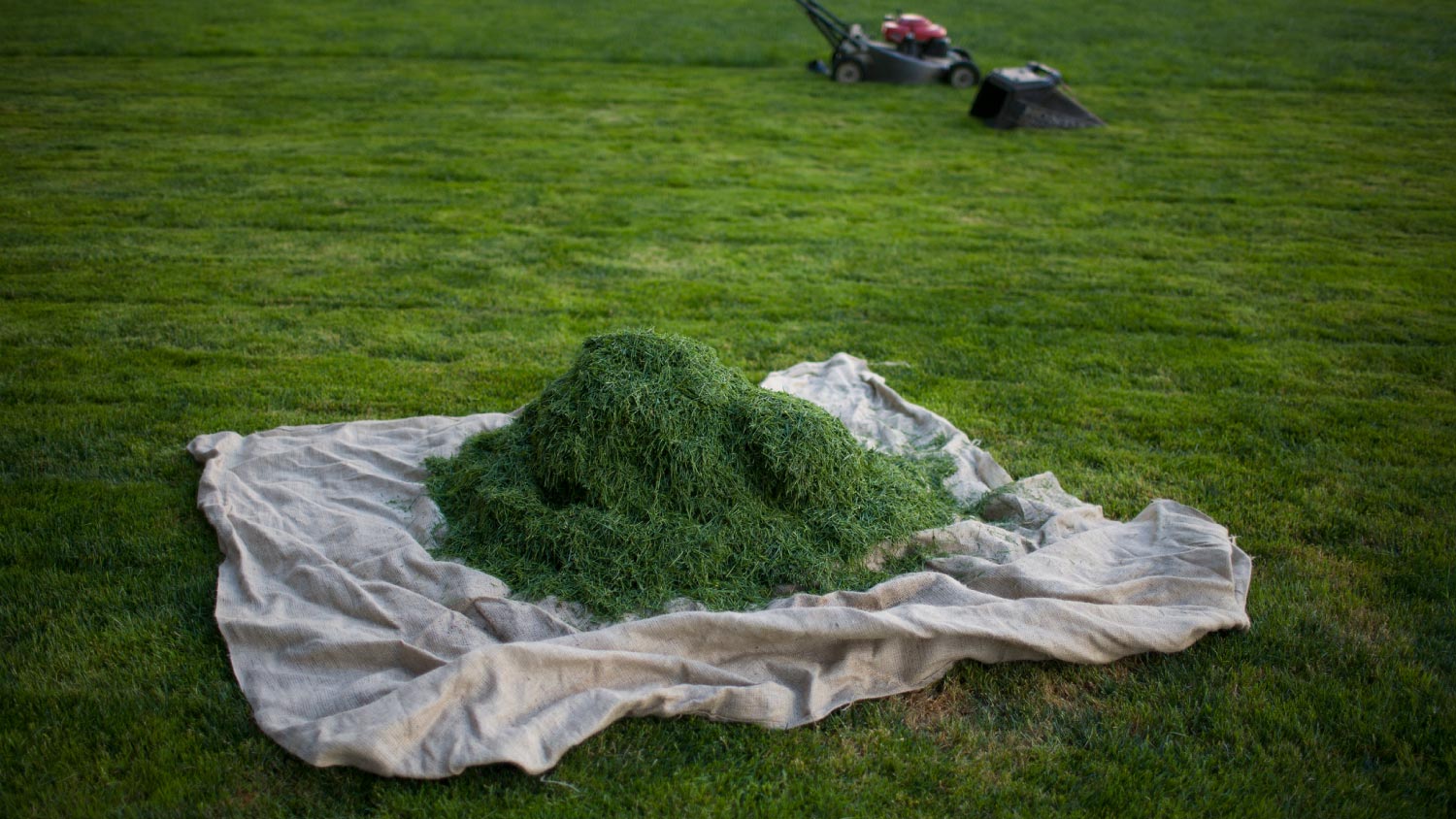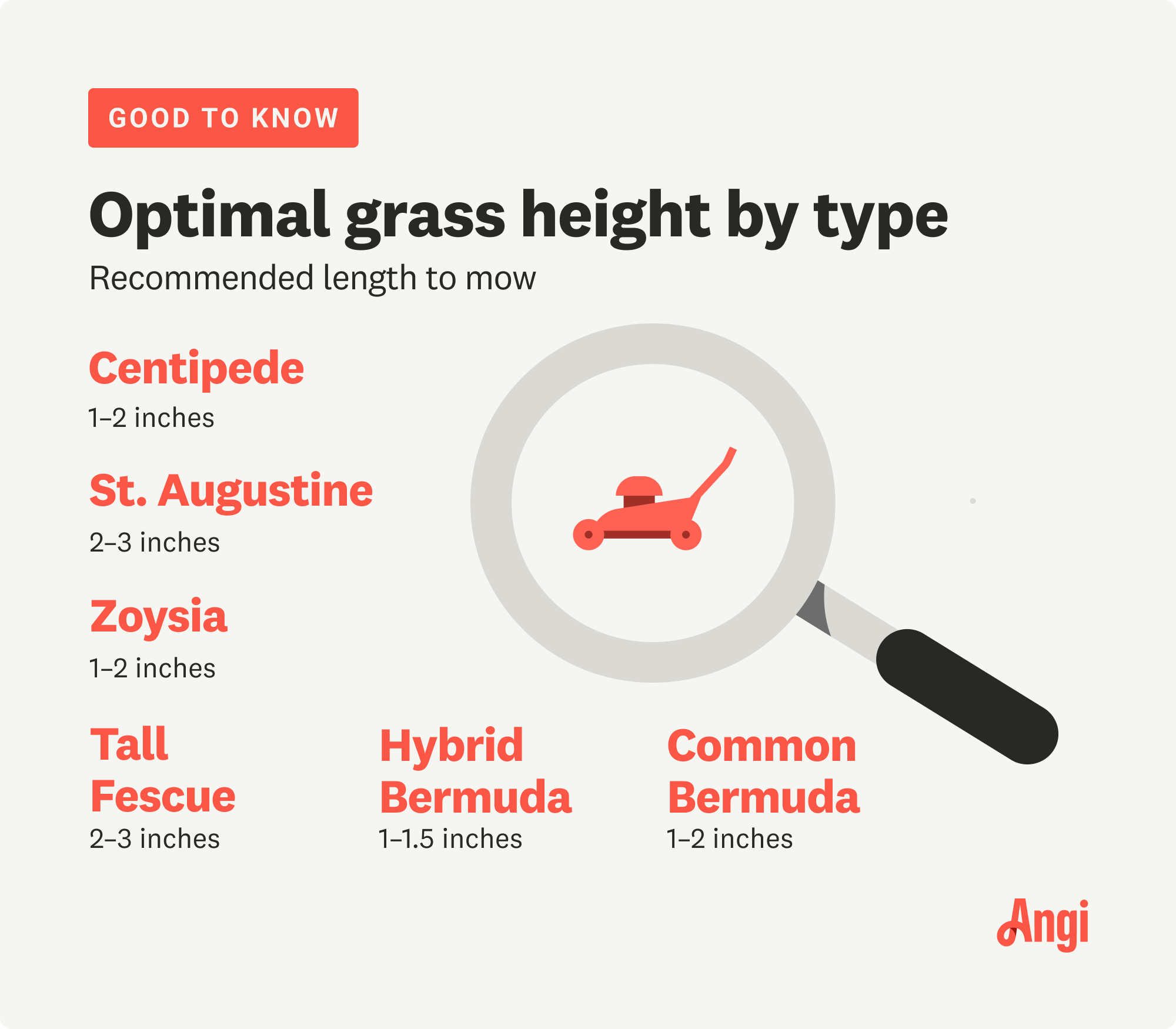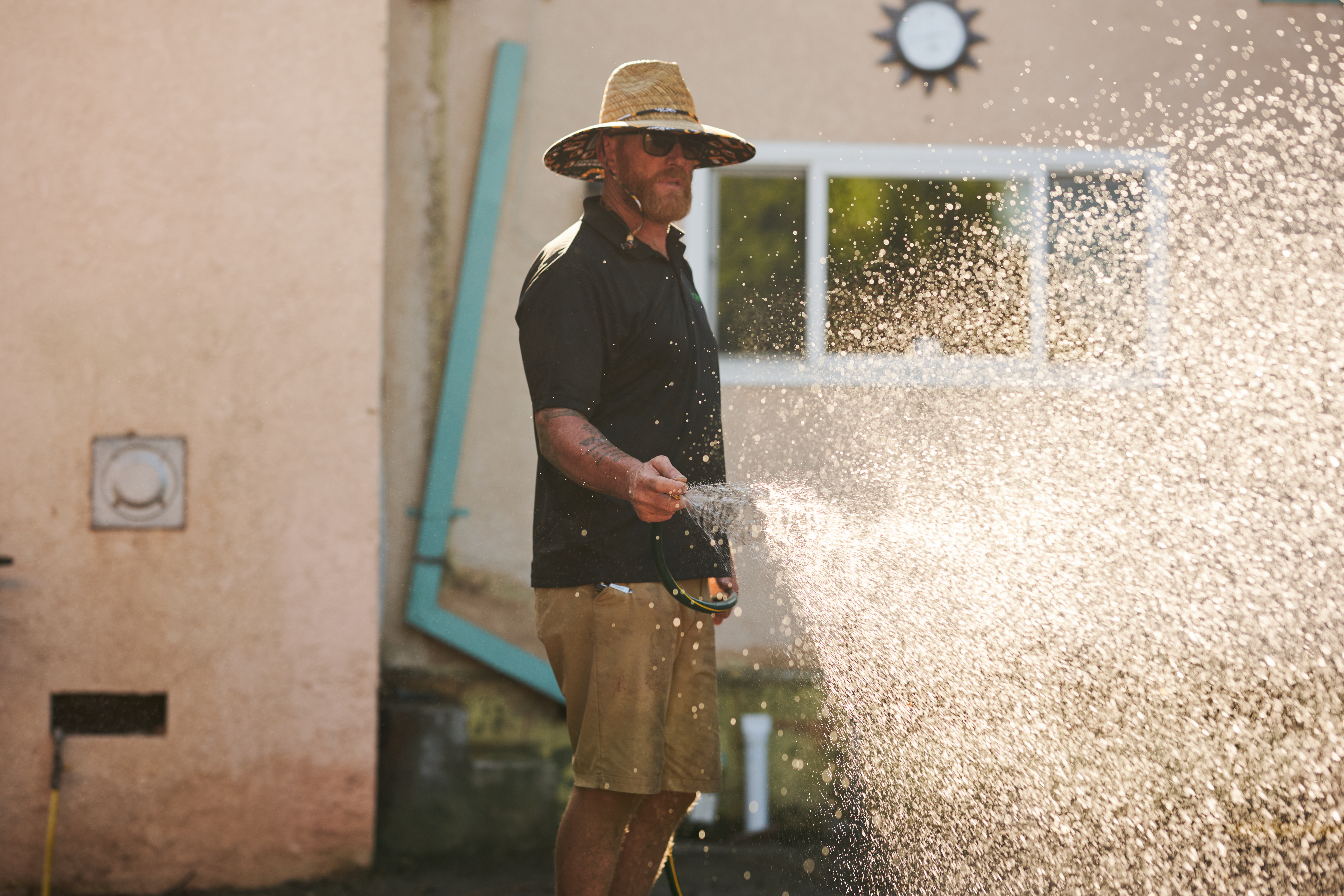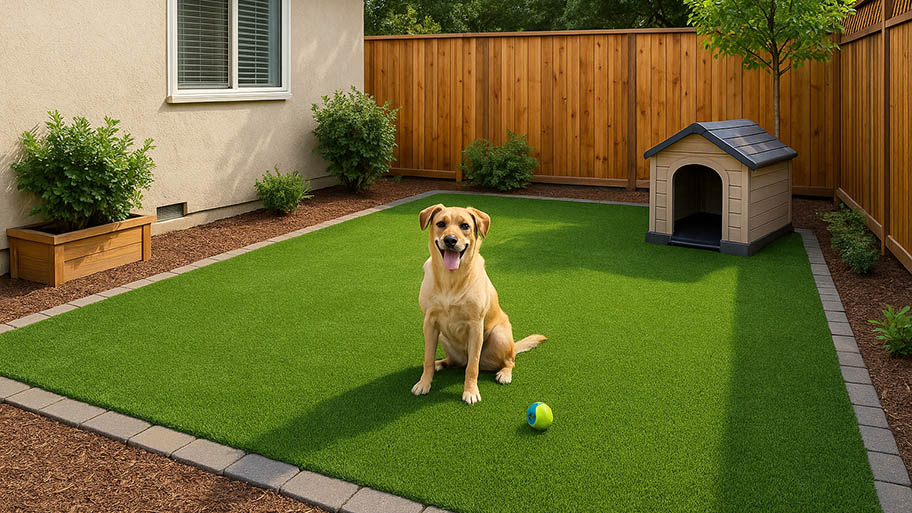
A landscape designer can elevate your outdoor space and bring your vision to life. Use this landscape design cost guide to budget for your next project.
Let the grass clippings fall where they may for instant lawn fertilizer


Grasscycling reduces garden waste.
It fertilizes the lawn and replaces chemical fertilizers.
This process also improves the quality of and increases the amount of soil.
If you’re an expert at keeping your lawn looking lush, you may think you’re familiar with all the lingo and tools you need for success. However, there may be one you’ve never heard of that can totally up your backyard game: grasscycling. This process is essentially mulching a lawn with its own clippings. It saves time and effort and is incredibly beneficial in reducing waste, saving money, and building a lush, healthy lawn.
Whether you hire a lawn care company or take on the yard work yourself, grasscycling is a solid choice for environmentally friendly yard maintenance. Learn more about grasscycling, including the benefits of recycling your lawn clippings and how to do it correctly.
The most basic explanation of grasscycling is just letting the grass clippings fall and stay on your lawn, where they break down, returning nitrogen and other nutrients to the soil. While it's a very simple principle, for it to work properly, there are a handful of easy steps you need to follow and a few mistakes you need to avoid.
You can grasscycle with a regular lawn mower, so there's no need to buy a fancy mulching model. Instead, if you have a mower with a built-in collection bag, just remove the bag before you start mowing and let the grass clippings spray out across the lawn. You can also grasscycle with a push mower. No expensive tools or equipment is necessary—just a standard mower and, occasionally, a rake.
Take a look at the key benefits of grasscycling to see whether you think it's worthwhile employing this easy green strategy for your own lawn.
Data from the Environmental Protection Agency (EPA) shows that yard trimmings make up 12.1% of all landfill waste, making garden waste the fifth highest contributor to solid waste in landfills. That's an incredible 35.4 million tons per year. And lawn trimmings make up a significant proportion of that figure.
Grasscycling basically eliminates the clippings you'd send to the landfill, substantially reducing your waste production and carbon footprint.
As the clippings break down into organic matter, they release nitrogen and other nutrients essential to your soil and grass’s health. Plus, as the clippings turn into compost, they increase the volume of the soil, helping to build healthy, replenished soil that encourages healthy root growth and provides plenty of food for the grass.
Because you're replenishing many of the vital nutrients naturally, you can reduce the amount of fertilizer you need by 20% or more, which saves you money and reduces your reliance on lawn chemicals.
Grasscycling takes some of the labor out of caring for your lawn because it doesn't require you to empty a clippings collector, haul clippings to the curbside, or transport them to a waste disposal facility.
A study in Texas found that although grasscycling required homeowners to mow their lawns one extra time per month, the time for each mowing was reduced by an average of 35 minutes. Grasscycling saved the typical homeowner seven hours each month in reduced lawn care time.
Although there's a pervasive myth that letting grass clippings stay on your lawn encourages thatch, the opposite is true. If you grasscycle regularly and correctly, it actually reduces thatch buildup. Plus, because your lawn becomes thicker and greener, the grass crowds out and prevents weeds, leaving them no room to get established.
While the grass clippings are breaking down, they sit at the base of the living grass blades and act as mulch, helping to minimize evaporation and retain moisture. This perk is particularly beneficial during long, hot, dry spells.

Check out these tips for the most effective grasscycling for a beautiful, lush lawn all year round.
Don't get carried away. Never cut more than one-third of the grass height. Longer grass is healthier and more tolerant of imperfect conditions. Plus, cutting more than a third of the height can shock your grass leading to a sickly, patchy lawn that takes a full year to recover.
The chart below shows a few common residential grass types and their recommended minimum height.

Dull blades tear the grass and cause significant damage compared to the clean cuts from sharp mower blades.
Trying to mow when your grass is wet damages and tears the grass and also makes the clippings clump together, making it difficult to achieve a nice, even layer of mulch.
Grasscycling is most effective when you only lightly trim the top of the lawn at regular intervals because shorter clippings break down faster. If you do find you've got longer clippings than you'd like, take a rake and help disperse them across the lawn. In a day or two, they'll work their way to the base of the grass and start to break down.
Although grasscycling reduces the need for soil amendments, one of the best lawn care tips for spring is still to apply a high-quality organic lawn feed early in the growing season. This step gives your grass, which is just coming out of its dormancy, a nice nutrient boost to encourage both root development and blade growth.
Watering well but occasionally encourages deep, strong root growth for a healthy lawn that's not prone to thatch, fungus, or disease. Frequent shallow watering results in shallow root development and thus a need for heavy fertilizing. It can also result in excessive thatch buildup. Aim to add enough water to moisten the top 6 to 8 inches of soil.
The spinning blades on these mowers tend to make short, clean cuts that are ideal for grasscycling.
Reel mowers also make mowing the lawn a fun workout and reduce your carbon footprint because they're human-powered.
Knowing when not to grasscycle is just as important as knowing how to do it right. Here are the key times you should avoid grasscycling:
Grass has been treated with herbicides
Grass is so long it needs strimming before mowing
Grass is diseased
From average costs to expert advice, get all the answers you need to get your job done.

A landscape designer can elevate your outdoor space and bring your vision to life. Use this landscape design cost guide to budget for your next project.

How much does hardscaping cost project by project? Check out our breakdown for every price tag you need to know, from outdoor fireplaces to patios.

Leveling your yard can help with drainage and prevent damage to your home. Learn the cost to level a yard in Columbus, OH, and what factors can affect the price.

The right landscaper can transform your property. Learn how to hire a landscaper who will be the best fit for your landscaping project.

Liven up dull concrete spaces by installing artificial turf. Learn how to install artificial grass on concrete in just a few hours.

Wondering when the best time to regrade your yard is? Learn why fall is ideal and what factors you should consider that affect your specific timeline.